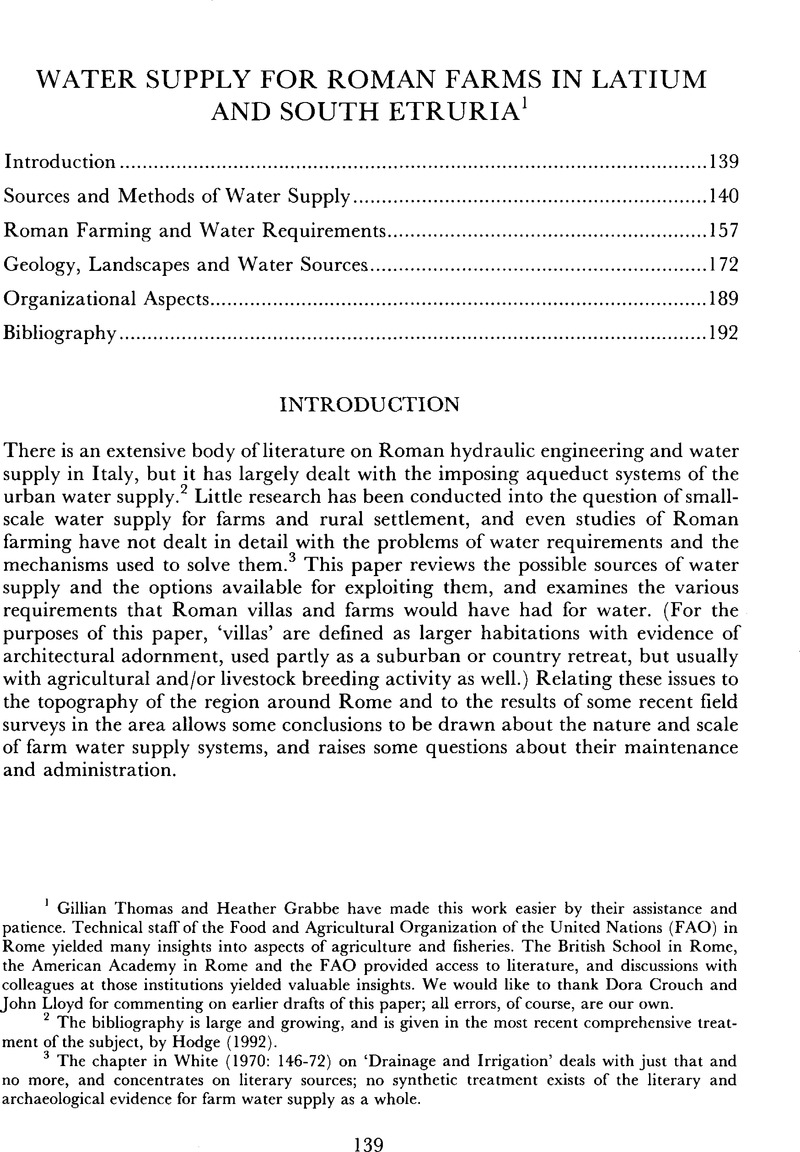Crossref Citations
This article has been cited by the following publications. This list is generated based on data provided by
Crossref.
Gilkes, Oliver
Martin, Sally
and
Matheus, Michael
2000.
Excavation and survey at Prati San Martino, Sutri.
Papers of the British School at Rome,
Vol. 68,
Issue. ,
p.
371.
Potter, T. W.
and
Stoddart, Simon
2001.
A century of prehistory and landscape studies at the British School at Rome.
Papers of the British School at Rome,
Vol. 69,
Issue. ,
p.
3.
Wilson, Andrew
2002.
Machines, Power and the Ancient Economy.
Journal of Roman Studies,
Vol. 92,
Issue. ,
p.
1.
2002.
Malaria and Rome.
p.
vii.
Sallares, Robert
2002.
Malaria and Rome.
p.
43.
Wilson, Andrew
2002.
Machines, Power and the Ancient Economy.
Journal of Roman Studies,
Vol. 92,
Issue. ,
p.
1.
Sallares, Robert
2002.
Malaria and Rome.
p.
168.
2002.
Malaria and Rome.
p.
xiv.
Sallares, Robert
2002.
Malaria and Rome.
p.
23.
Sallares, Robert
2002.
Malaria and Rome.
p.
235.
2002.
Malaria and Rome.
p.
330.
Sallares, Robert
2002.
Malaria and Rome.
p.
201.
2002.
Malaria and Rome.
p.
vi.
2002.
Malaria and Rome.
p.
v.
2002.
Malaria and Rome.
p.
xvi.
Sallares, Robert
2002.
Malaria and Rome.
Sear, Frank
2006.
Cisterns, drainage and lavatories in Pompeian houses, Casa dei Capitelli Colorati (VII.4.51), Casa della Caccia Antica (VII.4.48) and Casa dei Capitelli Figurati (VII.4.57).
Papers of the British School at Rome,
Vol. 74,
Issue. ,
p.
163.
2011.
The History of Aquaculture.
p.
197.
Thomas, Edmund
2012.
Water and the display of power in Augustan Rome: the so-called ‘Villa Claudia’ at Anguillara Sabazia.
Water History,
Vol. 4,
Issue. 1,
p.
57.
Hollander, David B.
and
Spanier, Ethan
2012.
The Encyclopedia of Ancient History.



